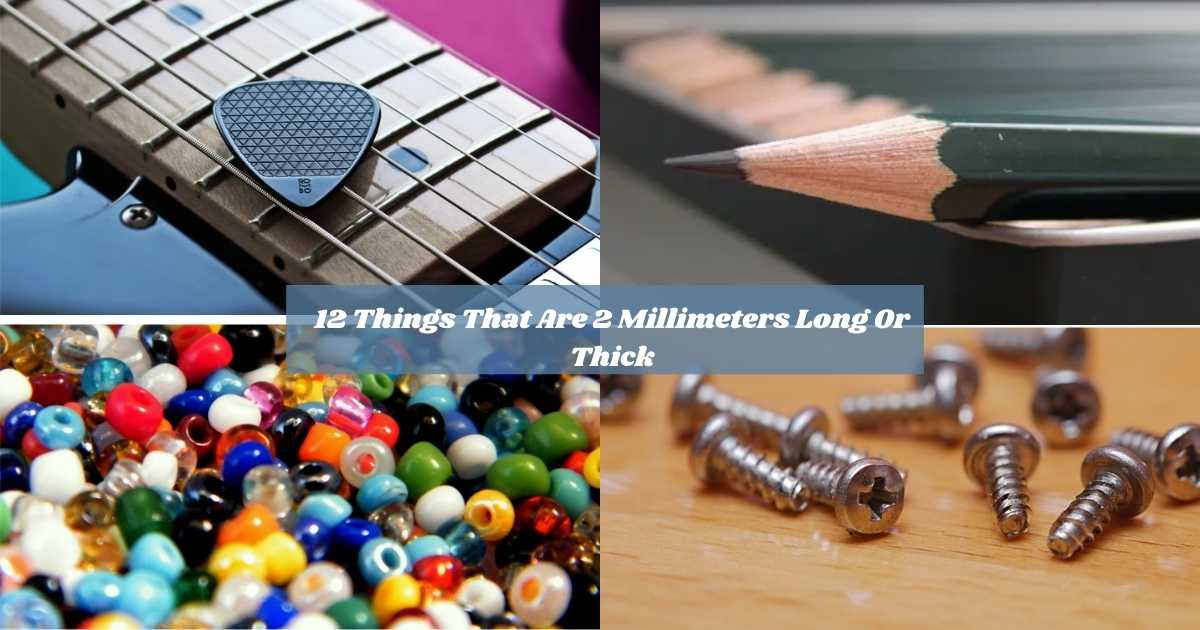When we talk about measurements, two millimeters may sound like almost nothing. Yet, in everyday life, this tiny size often matters more than we realize. From the thickness of a pencil lead to the width of a grain of rice, 2mm can be found in many objects we see and use daily.
Understanding how long 2mm is becomes easier when we compare it with familiar things. Whether it’s jewelry, tiny screws, or even an ant, these real-world examples help us picture just how small 2 millimeters really are. This guide will give you clear comparisons and simple explanations so you can instantly imagine the size.
By the end, you won’t just know the exact measurement in inches or centimeters, you’ll also have a visual sense of what 2mm looks like in real life.
Millimeters to Inches Conversion Chart
| Millimeters | Inches |
| 1 mm | 0.0394″ |
| 2 mm | 0.0787″ |
| 3 mm | 0.1181″ |
| 4 mm | 0.1575″ |
| 5 mm | 0.1969″ |
| 6 mm | 0.2362″ |
| 7 mm | 0.2756″ |
| 8 mm | 0.3150″ |
| 9 mm | 0.3543″ |
| 10 mm | 0.3937″ |
| 15 mm | 0.5906″ |
| 20 mm | 0.7874″ |
| 25 mm | 0.9843″ |
| 25.4 mm | 1.0000″ |
| 30 mm | 1.1811″ |
| 35 mm | 1.3780″ |
| 40 mm | 1.5748″ |
| 45 mm | 1.7717″ |
| 50 mm | 1.9685″ |
| 55 mm | 2.1654″ |
| 60 mm | 2.3622″ |
| 65 mm | 2.5591″ |
| 70 mm | 2.7559″ |
| 75 mm | 2.9528″ |
| 80 mm | 3.1496″ |
| 85 mm | 3.3465″ |
| 90 mm | 3.5433″ |
| 95 mm | 3.7402″ |
| 100 mm | 3.9370″ |
| 150 mm | 5.9055″ |
| 200 mm | 7.8740″ |
| 250 mm | 9.8425″ |
| 300 mm | 11.8110″ |
| 350 mm | 13.7795″ |
How Thick is 2mm
At just two millimeters, the thickness is very small, almost the kind of detail you might overlook in daily life. To put it in perspective, 2mm is equal to 0.2 centimeters or about 0.079 inches. That means it’s less than one-tenth of an inch, a size you can see clearly but may find hard to measure without a ruler or caliper.
Many everyday objects give us a sense of what this thickness feels like. For example, the width of a pencil’s graphite core is usually around 2mm, and so is the diameter of some small beads used in jewelry making. Even stacking a couple of credit cards gets you close to this measurement, making it easier to imagine in real life.
In practical terms, 2mm is considered thin but still noticeable. It’s often the thickness chosen for small screws, wires, or watch parts where precision is required. While it may sound tiny, 2mm can be the difference between a perfect fit and something being too tight or too loose, which shows just how important such a small measurement can be.
Understanding 2 Millimeters in Simple Terms
To truly understand 2 millimeters, it helps to know where it fits in the metric system. A millimeter is one-thousandth of a meter, so 2mm is simply two of those tiny divisions. When converted, it equals 0.2 centimeters or about 0.078 inches, which highlights just how small this measurement really is.
Because of its tiny size, 2mm is often used to describe details that require precision. In everyday objects, it might refer to the thickness of a wire, the width of a bead, or the edge of a contact lens. While it seems small, in many industries a difference of even half a millimeter can make a big impact.
The key to understanding 2mm is realizing that it’s both tiny and significant at the same time. On its own, it might look small enough to overlook, but when applied in jewelry, electronics, or design, it becomes a critical measure. That’s why having a clear picture of 2mm is more useful than it first appears.
Things That Are 2 mm Long/Thick
This section showcases common objects that measure around 2mm. From elements in nature to everyday tools, these examples show how this tiny size appears in many parts of life.
Below is a list of items that make it easier to understand and visualize the length of 2 millimeters. Let’s take a closer look.
Tiny Screws
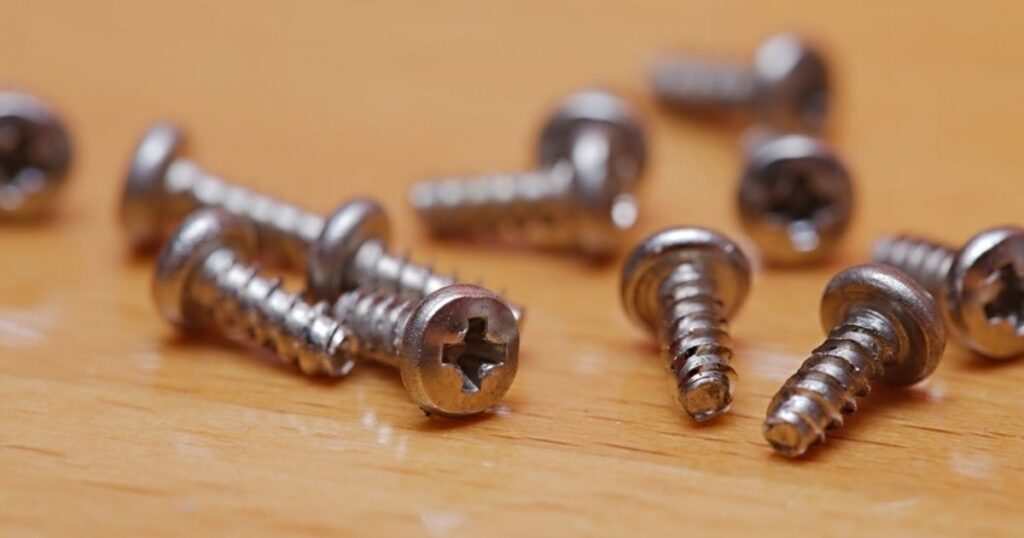
Tiny screws are one of the best real-life examples of 2mm in action. Many screws used in eyeglasses, watches, or small electronics measure close to 2mm in diameter. They are designed to be small but strong enough to hold delicate pieces together without adding extra bulk.
When you look at these screws up close, it’s clear how precise this size really is. A difference of even half a millimeter can change how tightly a screw fits into its place. That’s why 2mm screws are often used in areas where accuracy is essential, like circuit boards or jewelry clasps.
Thinking about screws also makes 2mm easier to imagine in daily life. If you’ve ever replaced a tiny screw in a pair of glasses or seen the back of a watch opened, you’ve likely handled something around 2mm. It shows how such a small size can play a big role in keeping things together.
Beads
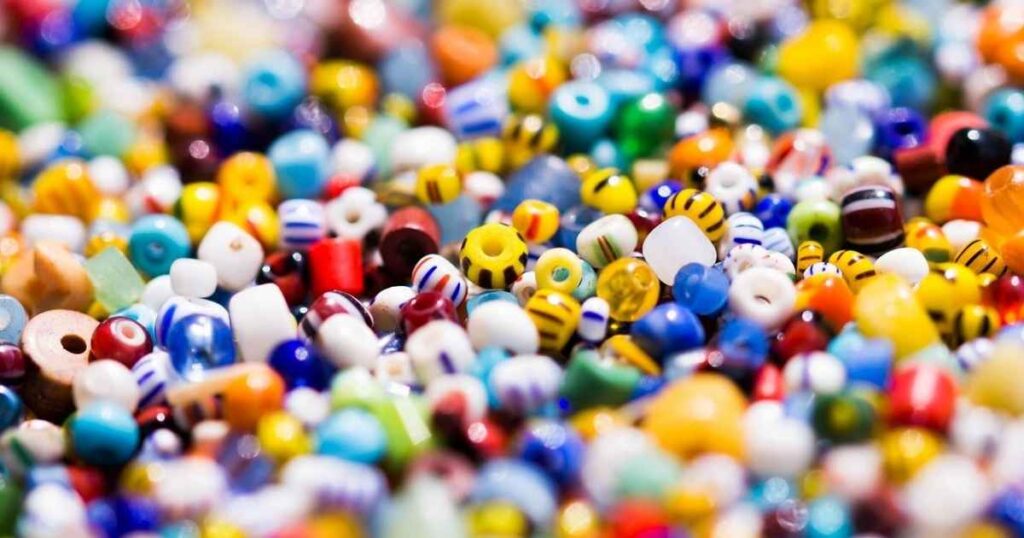
Beads are another common example of how small 2mm really is. In the world of jewelry making, seed beads often measure about 2mm in diameter. These tiny beads are popular in delicate designs because their size makes them perfect for detailed patterns and fine threading.
When you hold a 2mm bead in your hand, it looks almost like a pinhead. On their own they may seem insignificant, but when strung together, they create elegant and intricate designs. This is why bead makers rely on precise measurements, even a small difference can affect the final look of the piece.
Comparing 2mm to beads also helps people picture the scale in a very practical way. Whether it’s for a bracelet, necklace, or embroidery, seeing how small a 2mm bead is shows just how tiny yet versatile this measurement can be.
Standard Pencil Lead
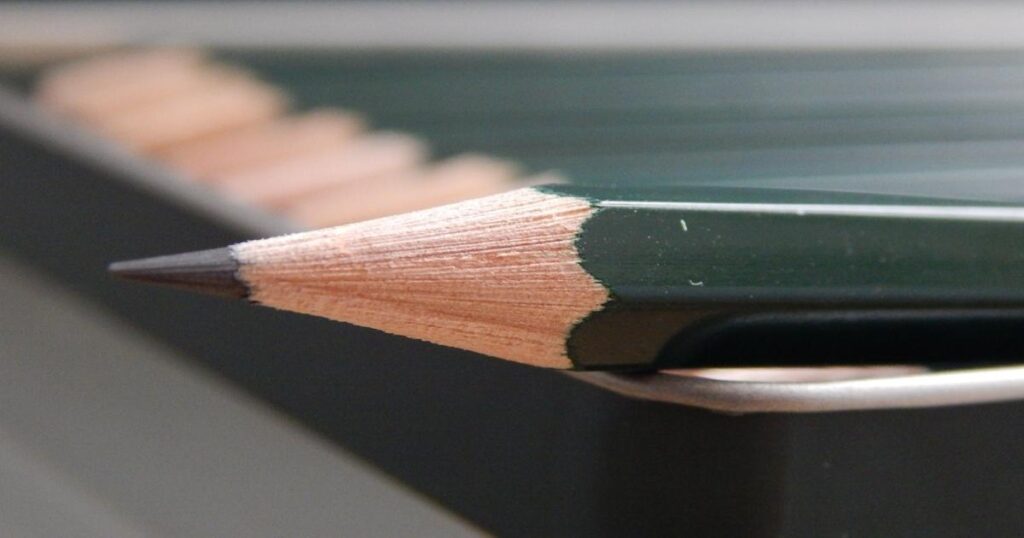
A standard pencil lead gives one of the easiest ways to picture 2mm. The graphite core inside many wooden pencils is about 2mm in diameter, making it a simple everyday comparison. If you look closely at the sharpened tip of a regular HB pencil, that dark circle you see is close to this tiny size.
This thickness is also common in mechanical pencils, where 2mm leads are used for sketching and technical drawings. Artists and designers often prefer this size because it provides stronger, bolder lines compared to thinner leads like 0.5mm or 0.7mm. It shows how a small change in millimeters can make a big difference in results.
By thinking of pencil lead, anyone can easily imagine what 2mm looks like without special tools. It’s a clear, everyday example that connects this small measurement to something familiar we use in school, work, or creative projects.
Seeds

Seeds give a simple way to imagine the size of 2mm. Many tiny seeds fall within this measurement, such as sesame seeds, poppy seeds, mustard seeds, and chia seeds. Each of these is very small, often around 1–3mm in length or width, which makes them excellent real-life comparisons.
For example, a sesame seed is usually about 2–3mm long, while a poppy seed is even smaller, often less than 1mm but similar in width. Mustard seeds and chia seeds, on the other hand, are closer to 2mm in diameter, which makes them especially useful when trying to picture this size.
By thinking of 2mm in terms of these everyday seeds, it becomes easier to visualize. Whether sprinkled on bread, added to a recipe, or seen in a spice jar, these tiny seeds show just how small yet noticeable 2mm really is.
Also Read>>> 12 Things That Are 10 Meters Long or Big
Thin Guitar Pick

A thin guitar pick is a great way to imagine the size of 2mm. While guitar picks come in different thicknesses, a 2mm pick falls on the thicker side compared to standard thin picks, which are usually under 1mm. At this thickness, it feels firm in your fingers, giving you more control over individual notes and making it perfect for precise playing styles.
For guitarists, the difference between a 1mm and a 2mm pick can completely change the sound. A 2mm pick produces a stronger, fuller tone because it doesn’t bend as easily when it strikes the strings. This tiny measurement highlights how small changes in thickness can create big differences in sound quality.
Using a guitar pick as an example helps you visualize how long 2mm really is. It shows that such a small size can have a noticeable effect in daily life, especially in music. Just like with beads, screws, or seeds, a 2mm pick proves that even the smallest measurements matter in practical and creative ways.
A Rice Grain

A grain of rice is one of the most relatable examples when imagining 2mm. On average, a single grain of uncooked rice is about 6–7mm long and around 2mm wide. That means the width of a rice grain perfectly matches the 2mm measurement, making it an everyday object most people can picture instantly.
When you hold rice in your hand, the tiny but firm size shows how small 2mm actually is. It’s just enough to be visible and tangible, but still very delicate. This comparison makes the concept of 2mm easier to understand because you’ve likely handled rice countless times in your kitchen.
Looking at rice also demonstrates how consistent such measurements can be in nature. Whether it’s long-grain basmati or short-grain sushi rice, that narrow 2mm thickness remains a good example of this tiny distance. It shows how 2mm isn’t abstract—it’s something you’ve already seen and touched.
Copper Wire
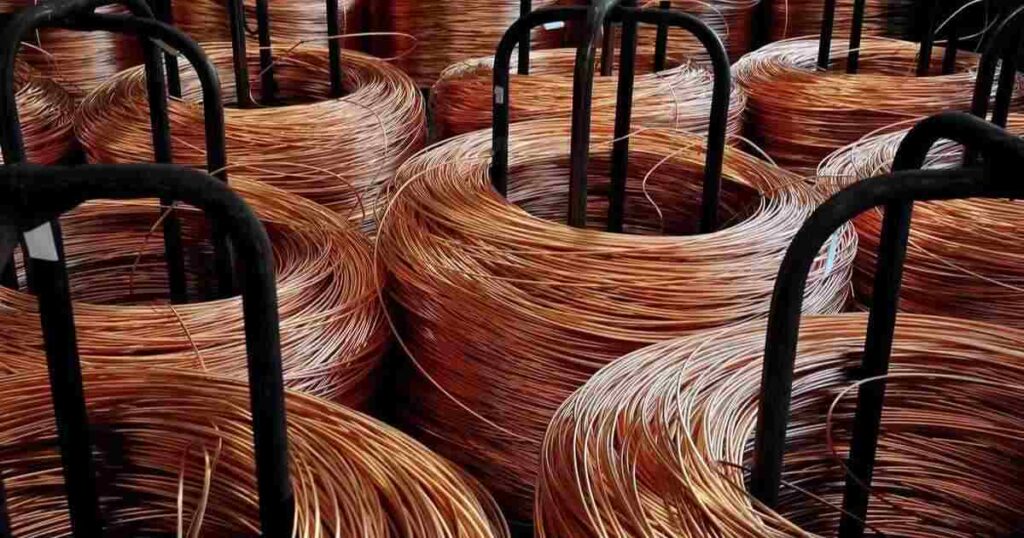
Copper wire is another practical example to visualize 2mm. In electrical work, wires come in different thicknesses, and a 2mm diameter wire is considered fairly thin but still strong enough for common uses. It’s thicker than delicate phone charger wires but thinner than heavy-duty industrial cables.
To put it in perspective, a 2mm copper wire is about the same thickness as a toothpick. This makes it easy to bend and cut, yet durable enough to conduct electricity efficiently. Electricians often use wires around this size for low to medium current applications.
Because copper is highly conductive, even a 2mm wire can carry electricity safely in household electronics or small appliances. This example shows how such a small measurement plays a big role in everyday life, powering the devices and systems we rely on daily.
An Ant

An ant is a perfect natural reference for understanding 2mm. Many common ant species, like pavement ants or pharaoh ants, measure around 2mm in length. That means the entire body of these tiny insects is about the same as this measurement, making ants an easy mental picture when trying to grasp how small 2mm really is.
Of course, not all ants are the same size. Some species are even smaller than 2mm, while others, like carpenter ants, can grow much larger. But when you think of the tiny ants often seen around homes or gardens, their bodies usually fall right within that 2mm range.
This comparison highlights just how precise 2mm is. Something as small as an ant might seem insignificant, yet it shows how this tiny length is very real and relatable in the world around us.
Credit card thickness

Card thickness is another excellent way to picture 2mm. A standard credit or debit card is about 0.76mm thick, which means if you stack three cards together, you get close to 2mm in thickness. This makes it easy to visualize, since almost everyone has handled a card and can instantly compare the size.
Thinking in this way shows that 2mm is not very thick at all—just a little more than the combined thickness of two cards and slightly less than three. It’s a tiny measurement, but still noticeable when you hold something that size.
This example also makes 2mm relatable in everyday life. Whether it’s stacked cards in your wallet or thin objects you use daily, comparing them with 2mm helps you understand the scale without needing a ruler.
Watch Components
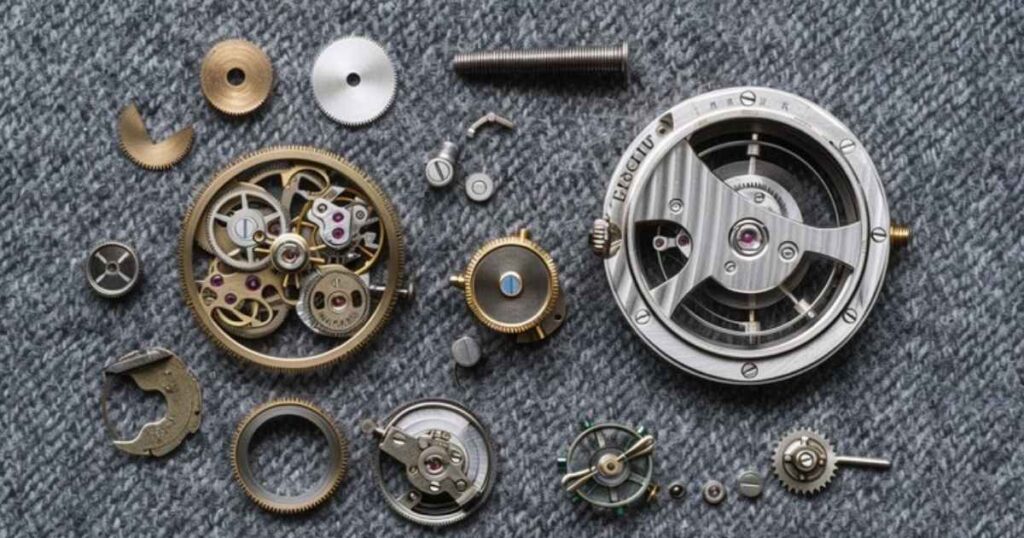
The Watch components give another practical example of how small 2mm really is. In many wristwatches, the tiny gears, screws, and springs inside often measure around 2mm in size. These precision-made parts are designed to fit together perfectly, ensuring the watch keeps accurate time.
For instance, the diameter of some watch screws or the thickness of a gear tooth can be close to 2mm. To the naked eye, these parts look almost too small to handle, yet they play a vital role in the watch’s movement. This shows how even a fraction of a millimeter can make a big difference in delicate machinery.
By looking at watch components, it’s clear that 2mm is not just a random number—it’s a size crucial for accuracy and precision. Without such tiny measurements, devices like watches wouldn’t function as smoothly as they do.
Contact Lens Edges

Contact lens edges are another helpful way to understand 2mm. Most soft contact lenses are extremely thin, with the central part often less than 1mm thick. However, the edges of a lens can measure close to 2mm in thickness, giving them enough structure to sit comfortably on the eye while still remaining flexible.
This slight thickness is barely noticeable when worn, yet it’s carefully designed for both comfort and durability. The 2mm edge ensures the lens holds its shape, making it easier to apply and remove without tearing.
Thinking of 2mm as the thickness of a contact lens edge highlights just how precise this measurement is. It’s small enough to feel weightless, but essential in making something safe and practical for everyday use.
Paperclip Wire Thickness
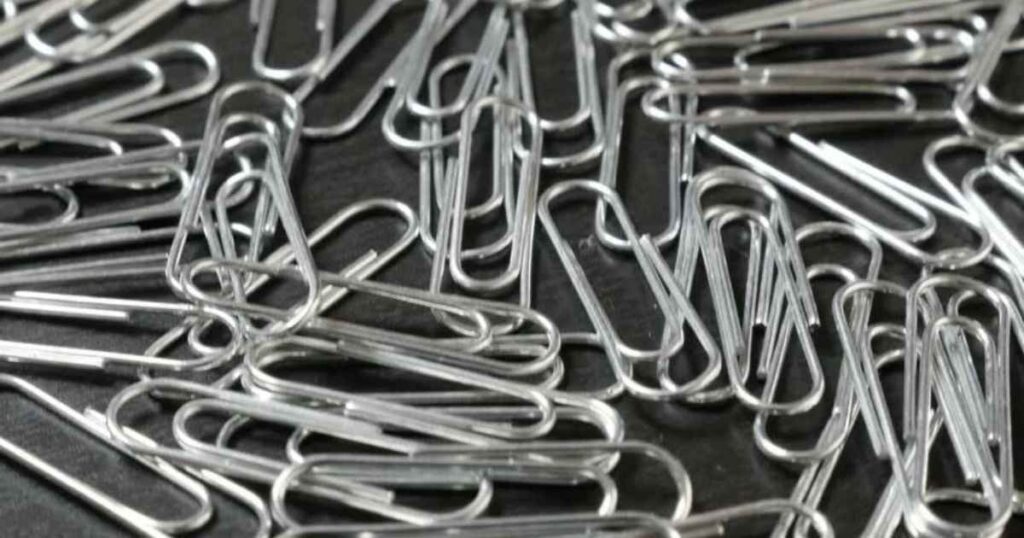
Paperclip wire thickness is another everyday example of 2mm. A standard paperclip is made from steel wire, and depending on the size, the wire’s diameter usually falls between 0.8mm and 1.5mm. Larger or sturdier paperclips can be very close to 2mm thick, making them a handy reference point.
When you hold a paperclip, the wire feels slim but sturdy, much like a 2mm object. It’s just thick enough to bend without breaking, which is why paperclips are both flexible and reusable.
Comparing 2mm to a paperclip’s wire helps put the size into perspective. It’s not razor-thin like a strand of hair, but still much smaller than a pencil or pen. This balance of strength and smallness shows why 2mm is often used in practical designs.
Real-Life Comparisons for 2mm
Real-life comparisons for 2mm make it much easier to picture such a small measurement. For example, it’s about the thickness of three stacked credit cards, the diameter of a tiny screw, or the size of common seeds like mustard or sesame. These are everyday things most people have handled, so they create an instant mental image of how small 2mm really is.
Nature also provides relatable examples. A small ant’s body length, the edge of a soft contact lens, or even the thickness of a rice grain can measure around 2mm. Each of these shows how such a tiny unit plays a role in both the natural world and human-made designs.
Whether in technology, fashion, or nature, 2mm is everywhere once you start noticing it. From copper wires and watch components to beads or guitar picks, this size combines smallness with practicality, proving that even the tiniest measurements matter in our daily lives.
2mm in Daily Life Uses
2mm in daily life is more common than many people realize. For instance, wires around 2mm thick are widely used in electronics and household devices, providing the right balance between strength and flexibility. Similarly, items like paperclips, screws, and beads often come close to 2mm, showing how this tiny size is practical for everyday tools.
In fashion and accessories, 2mm thickness is just as important. Jewelry chains, earring posts, or even watch components often measure around this size, combining durability with a sleek, lightweight feel. It’s small enough to look delicate but strong enough to last with daily wear.
Even in nature, 2mm shows up constantly like in the size of certain seeds, ants, or rice grains. These examples prove that 2mm is not just a number on a ruler, but a measurement that quietly shapes many things we see and use in daily life.
Read More : 14 Common Things That Are 40 Meters (m) Long/ Big
Conclusion
Understanding how long 2mm is becomes much easier when you connect it to everyday examples. From the thickness of a credit card stack to the size of tiny screws, beads, rice grains, or even an ant, 2mm is all around us in ways we often don’t notice. Though it may seem like a very small measurement, it plays an important role in design, technology, fashion, and even nature.
So next time you wonder how long is 2mm, think about the practical items you use every day, like paperclips, guitar picks, or watch components. These comparisons show that even the smallest measurements can have a big impact, making 2mm both easy to visualize and meaningful in real life.

Hi, I’m Tony — a passionate blogger with over 3 years of experience in writing informative and accurate content. I specialize in sharing practical insights on sizes, measurements, and spatial guides to help readers make confident decisions. Through DimensionsPoint.com, I aim to simplify complex data into easy-to-understand content that’s reliable, useful, and SEO-friendly.
When I’m not writing, I’m researching the latest trends in measurement standards and user needs to keep my content relevant and up to date.

